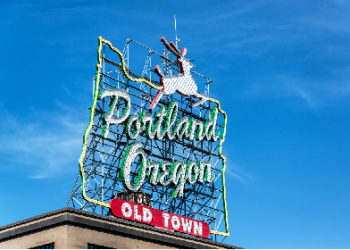Protect Your Child’s Rights by Learning What is a Narakas Birth Injury and How it Can be Caused by Oregon Medical Malpractice
Every parent looks forward to the moment when their child is born. They envision it as a happy moment, seeing their healthy baby for the first time. While many births do turn out that way, unfortunately there are times when a child is injured during the labor and delivery process. While some complications are unavoidable, there are instances when a baby is injured due to a provider’s mistake. One type of complication that occurs and can be due to a physician or other health care provider’s error is Narakas injury. Often times a family will ask what a Narakas birth injury is when they hear the diagnosis, which is because it is not a common injury and usually due to medical errors or negligence.
A Narakas injury occurs when there is damage to the brachial plexus at birth. The brachial plexus is a network of nerves that control the arm, shoulder, hand, intercostal muscles, diaphragm, wrist and elbow functioning. Any damage to these nerves can be devastating and can significantly impair the newborn’s ability to function. The most common causes of brachial plexus injuries resulting in a Narakas injury are when a baby’s arm or neck are pulled in opposition directions, or when a baby’s arm is pulled, yanked, or otherwise maneuvered in an aggressive manner. This can stretch the nerves and cause they to tear, separate, or even be completely pulled from the spinal cord.
The Brachial Plexus Nerves Explained
The brachial plexus is a network of nerves that extend through the neck, armpit arm, and fingers, originating at the spine. These nerves are responsible for many functions, including movement, sensation and strength, along with the overall functioning of the arm. Brachial plexus injuries, especially those that occur at birth can cause a great deal of damage and impaired functioning for the infant. The brachial plexus contains five nerves that combine together and the base of the neck and run down to the armpit before each of these nerves branch off into their respective nerve branches. There are five brachial plexus nerves, including C5, C6, C7, C8 and T1.To better understand Narakas injury, specific functioning of each nerve is detailed below with the following:
- C5 – This nerve helps with the function in regard to movement of the shoulder, ability to raise the arm, and flexion of the elbow. It also plays a small part in the function of the diaphragm, although C4 has greater responsibility in regard to diaphragm function
- C6 – This particular nerve also helps with the function of elbow flexion, raising of the arm and movement of the shoulder. Additionally, it helps with with external rotation of the arm, extension of the elbow and wrist, and rotation of the wrist over
- C7 – C7 is responsible for supply the small muscles in the hand movement along with extension of elbow and wrist, wrist rotation and wrist flexion
- C8 – This nerve is responsible for flexion of the wrist and greatly aids in the functioning of the small muscles in the hand as this nerve provides their strength, sensation and function
- T1 – Lastly, T1 helps with functioning of the muscles over the intercostals, the trunk at the area above the waist, as well the shoulder
A Narakas injury is a type of brachial plexus injury that is classified according to the Narakas classification system. When a newborn has a Narakas injury, it can greatly impair the development of their hands, fingers and arms, resulting in significant debilitation.
Understanding What is a Narakas Birth Injury From the Classifications
The classification of these injuries greatly depends based on the location of the injury as well as the severity. There are many different types and degrees of injury, with the worst type being an avulsion. In the case of an avulsion injury, the nerve is entirely torn from the spinal cord. A neuroma is a less serious injury, causing damage to the nerve. The nerve heals itself but often forms scar tissue which can cause dysfunction and pain for the afflicted individual. A rupture is a type of injury that occurs when the nerve is torn, but not from the spinal cord. Lastly, a neuropraxia injury occurs when there is damage the the myelin, the nerve’s protective covering.
The Narakas classification system is based off the location of the injury. The scale for Narakas injury includes the following:
- Group 1 – Duchenne-Erb’s Palsy – With a damage location of C5-C6, group 1 injuries cause loss of function, paralysis and weakest of the biceps and deltoid muscles, which are located at the top of the arm. With group 1 injuries, the hand and wrist typically remain unaffected
- Group 2 – Intermediate Paralysis – Damage for this type of injury is from C5, C6 and C7, resulting in weakness, paralysis and loss of function of the wrist, fingers, biceps, and deltoids. Individuals with group 2 injuries are able to flex their fingers, but not extend them
- Group 3 – Total Brachial Plexus Palsy – This type of injury is quite severe, with damage occurring through all layers of the brachial plexus nerves (C5-T1). As a result, there is complete paralysis to the nerves, including loss of movement, strength, function and sensation. This can vary depending on the severity of the injury. However, often near-complete paralysis occurs
- Group 4 – Total Brachial Plexus Palsy with Horner’s Syndrome – This type of injury is very similar to group 3, but also causes the injured individual to have Horner’s Syndrome. Horner’s Syndrome occurs when there is damage to the nerves in the neck which affects facial movements and functions. Often, people afflicted with Horner’s Syndrome will have a contracted pupil, upper eyelid droop, and the inability to sweat on one side of the face
How Can Narakas Injury be Caused by Oregon Medical Malpractice?
While not all cases of Narakas injury are caused by medical malpractice, there are instances when newborns are injured as the result of negligence on behalf of the physician during labor and delivery. Common causes of medical malpractice related Narakas injury includes the following:
- Excessive force when trying to deliver the baby, including yanking, pulling or grabbing the baby’s heath, neck or arms during delivery
- Failing to use extraction tools appropriately (i.e. scalpel, forceps, vacuum extractor, injections)
- Failing to assess the mother and baby prior to labor and delivery to determine if the baby will be able to fit through the mother’s birth canal
- Pulling the baby during contractions
- Dropping a baby on their shoulders, neck or head
- Delaying a c-section when it is truly indicated
- Failing to assess the baby’s position at time of delivery, and
- Many other types of injuries.
If you find yourself asking what is a Narakas birth injury, you may be entitled to compensation from a negligent healthcare provider such as the OB-GYN, family care doctor, primary care physician, nurse, hospital, outpatient group, midwife, or any other healthcare provider who has caused serious medial malpractice to you or your loved one. This compensation is important because it can help protect the rights of your loved one by paying for medical treatment, bills, and future costs of care, as well as for paying pain and suffering.
Never Ask What is a Narakas Birth Injury and Not Get an Answer: Ask Our Lawyers for Help and Answers Here in Oregon
If you or a loved one have been seriously injured or killed as a result of medical malpractice contact the Oregon Medical Malpractice Lawyers at Kuhlman Law at our number below or fill out the intake form. We offer a free initial case evaluation and handle cases on a contingency fee which means that you pay no money unless we recover.
Our law firm handles cases throughout the state including Bend and Portland Oregon, Redmond, Central Oregon, Sisters, Madras, Multnomah County, Deschutes County, Salem, Eugene, Corvallis, Lane County, Medford, Gresham, La Grande, Albany, Medford, Beaverton, Umatilla, Pendleton, Cottage Grove, Florence, Oregon City, Springfield, Keizer, Grants Pass, McMinnville, Tualatin, West Linn, Forest Grove, Wilsonville, Newberg, Roseburg, Lake Oswego, Klamath Falls, Happy Valley, Tigard, Ashland, Milwakie, Coos Bay, The Dalles, St. Helens, Sherwood, Central Point, Canby, Troutdale, Hermiston, Silverton, Hood River, Newport, Prineville, Astoria, Tillamook, Lincoln City, Hillsboro, and Vancouver, Washington.
We also have an office in Minneapolis, Minnesota and take medical malpractice cases throughout the Twin Cities, including St. Paul, Hennepin County, Ramsey County, Dakota County, Washington County, Anoka County, Scott County, Blaine, Stillwater, and Saint Paul Minnesota.




